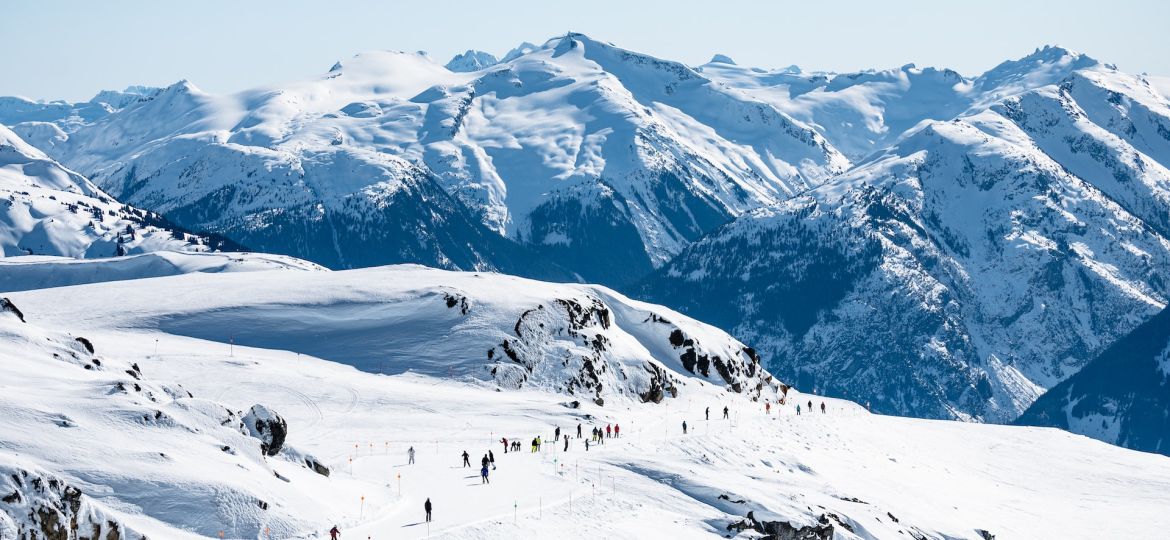
When you are an advanced skier, the slopes feel like a second home. You’ve mastered the basics, can make turns effortlessly and are no longer afraid of steeper slopes. Yet there are always ways to improve your technique, because skiing is a sport in which details make the difference. Refining your technique is not only a way to ski more efficiently and elegantly, but it also makes you safer and more versatile. In this article we discuss how you can make those small improvements that make a big difference.
THE VALUE OF A GOOD POSTURE
Attitude is the core of every good skier. As an advanced skier, you’ve probably adopted a standard position that works for most slopes. But fine-tuning your posture can dramatically improve your performance and control.
Good posture starts with balance. Your body should form a line ready to absorb and direct every movement. Imagine that you have a slight bend in your knees, your weight is evenly distributed over both skis, and your upper body leans slightly forward. Many advanced riders tend to lean back, especially at higher speeds, which affects their stability. By focusing on keeping your center of gravity forward, you can maintain a better grip on your skis and move through turns more efficiently.
In addition, the position of your arms plays a crucial role. Keep them relaxed and slightly bent on either side of your body, as if you were holding a tray. This helps you maintain balance and respond quickly to changes in terrain.
Dynamics and rhythm on the slopes
Skiing is a dynamic sport that revolves around rhythm and movement. Many advanced users get stuck in a pattern of mechanical movements. By developing a sense of rhythm and flow, you will not only make smoother turns, but you will also save energy. Rhythm starts with planning your descents. Don’t just look at the next turn, visualize the entire section of the track and how you want to approach it. This forethought ensures a smooth, controlled descent.
Another important aspect of dynamics is your ability to play with speed. Many advanced athletes maintain a constant pace, but by consciously going faster and slower you can adapt your technique to the circumstances. On steeper slopes you can experiment with short, sharp turns to reduce speed, while on flat sections you can make longer, smooth turns.
Common mistakes made by advanced students
Even experienced skiers make mistakes that can undermine their technique. A common mistake is overreacting to terrain changes. When approaching a bumpy section or icy spot, it is important to stay calm and minimize your movements. Overcompensation can lead to loss of control.
Another mistake is not using your ski edges enough. Many advanced players still rely partly on slipping instead of fully using the edges. This reduces your grip, especially on harder slopes, and makes your movements less effective. By practicing consciously deploying your ski edges in each turn, you can achieve greater precision and stability.
Exercises to improve your technique
To further refine your technique, there are numerous exercises you can do. One of the most effective is skiing on one ski. This may sound challenging, but it forces you to remain completely balanced and conscious of every movement. Start on an easy slope and alternate between your left and right skis. You will notice that this exercise not only increases your balance, but also your self-confidence.
Another useful exercise is making short turns in a steady rhythmic sequence. Choose a medium incline and focus on quick, precise movements. This helps you improve your timing and power transfer, especially at higher speeds.
THE IMPORTANCE OF FEEDBACK
As an advanced skier you can sometimes feel that your technique is good enough and that you no longer need guidance. But even the most experienced skiers benefit from feedback. Consider taking a private lesson with an experienced ski instructor. A good teacher can point out little mistakes that you don’t see, such as subtle imbalances in your posture or inefficient use of your skis.
In addition, the use of video analysis can be a valuable tool. By filming yourself while skiing, you can see exactly what is going well and where your areas for improvement lie. This visual evidence helps you work on your technique in a more targeted manner.
CONCLUSION: KEEP GROWING AS A SKIER
Skiing is a sport in which you never stop learning. Even as an advanced skier, there are always new ways to refine your technique and expand your skills. Whether it’s balance and posture, rhythm and dynamics, or tackling common mistakes, there is always room for improvement. By regularly doing exercises, seeking feedback and challenging yourself, you will notice that you will not only ski better, but also ski with more pleasure. So next time you’re on the slopes, take a moment to consciously work on your technique – you’ll feel the difference.

